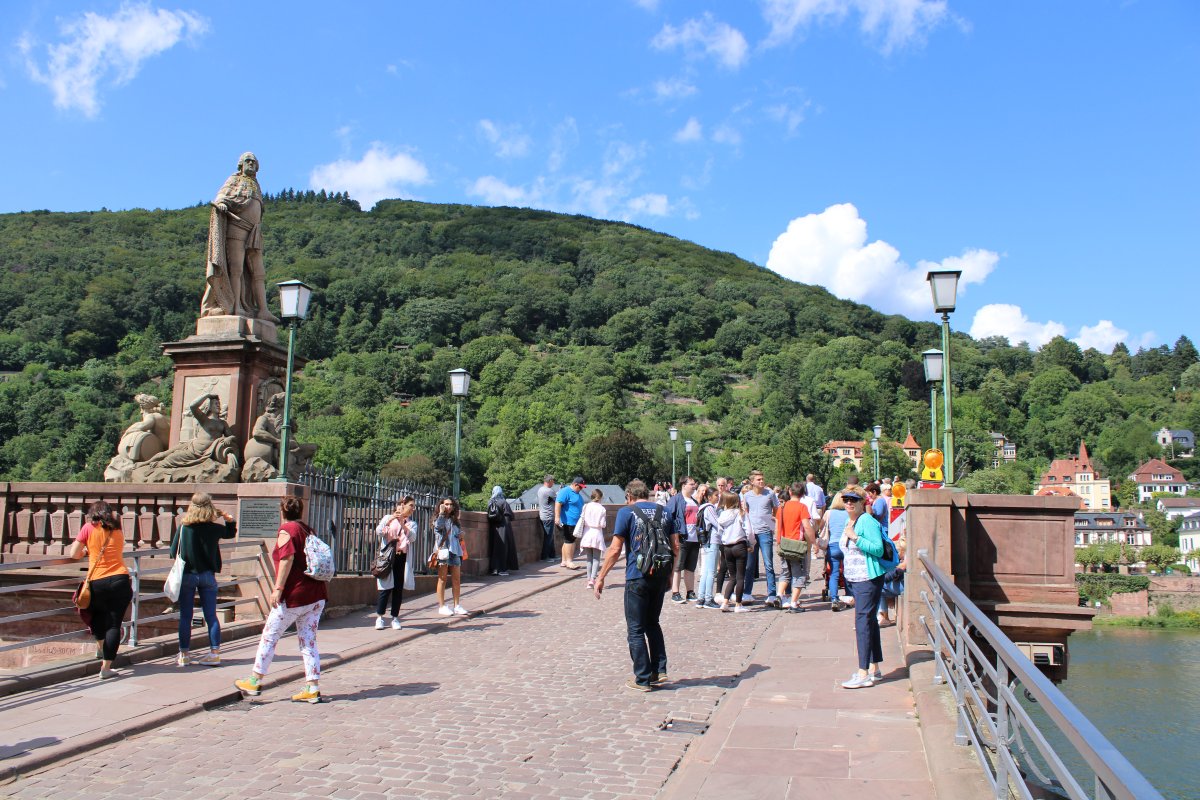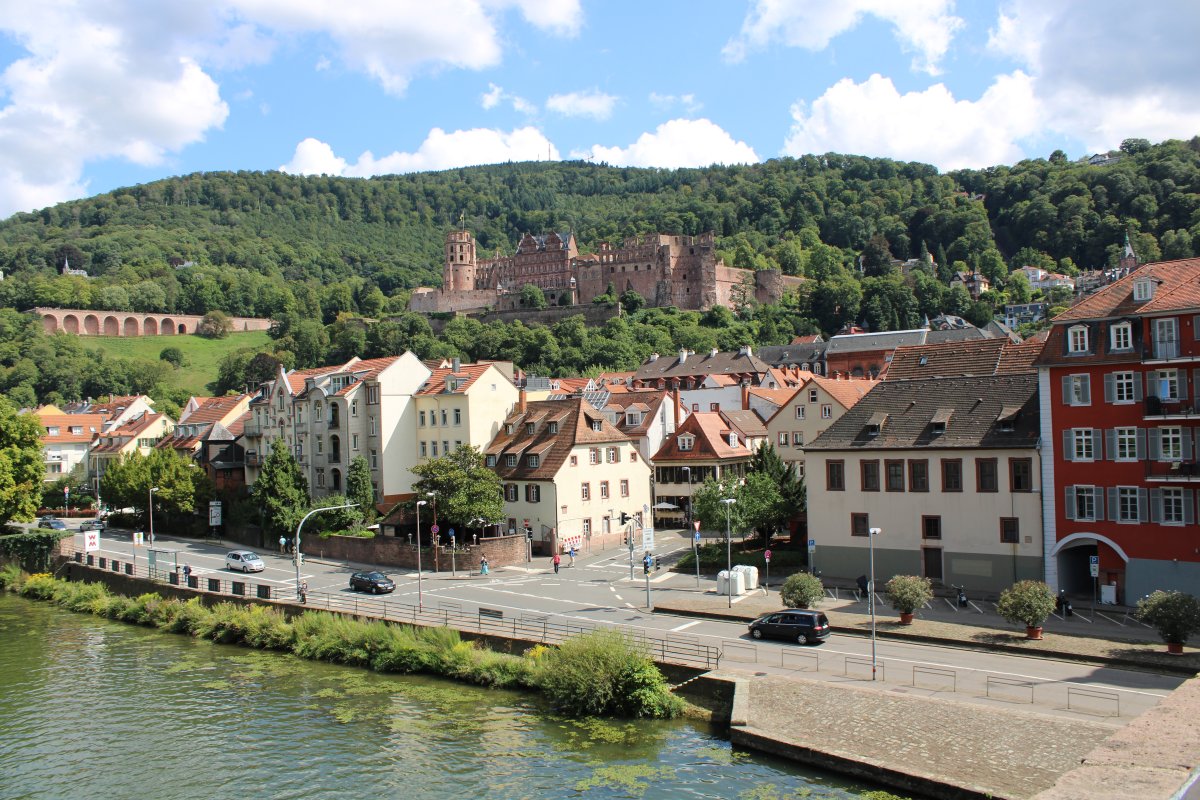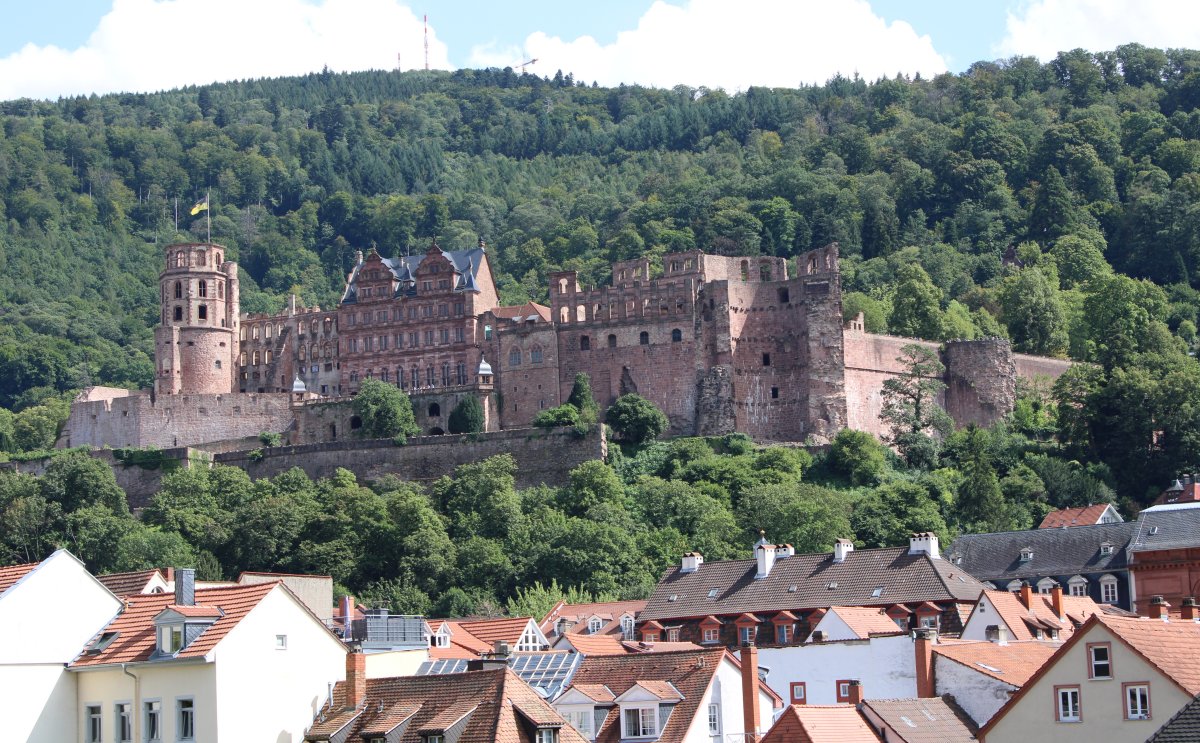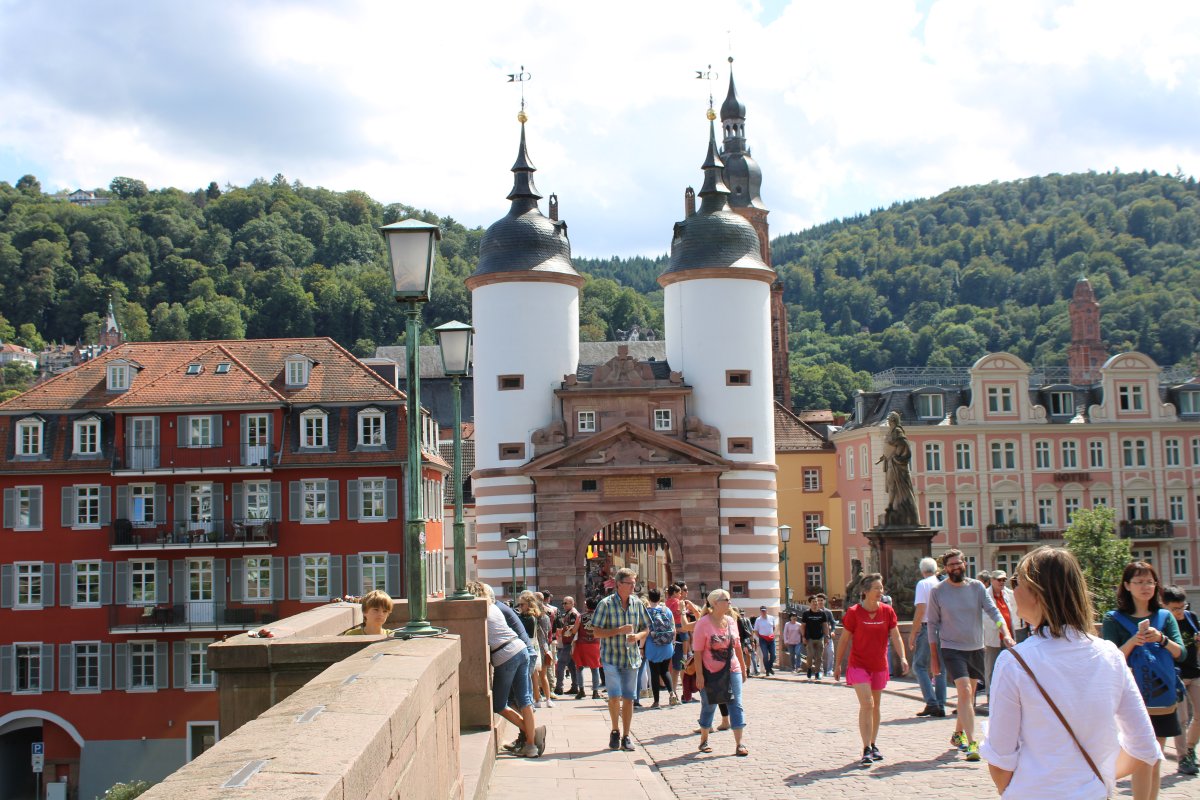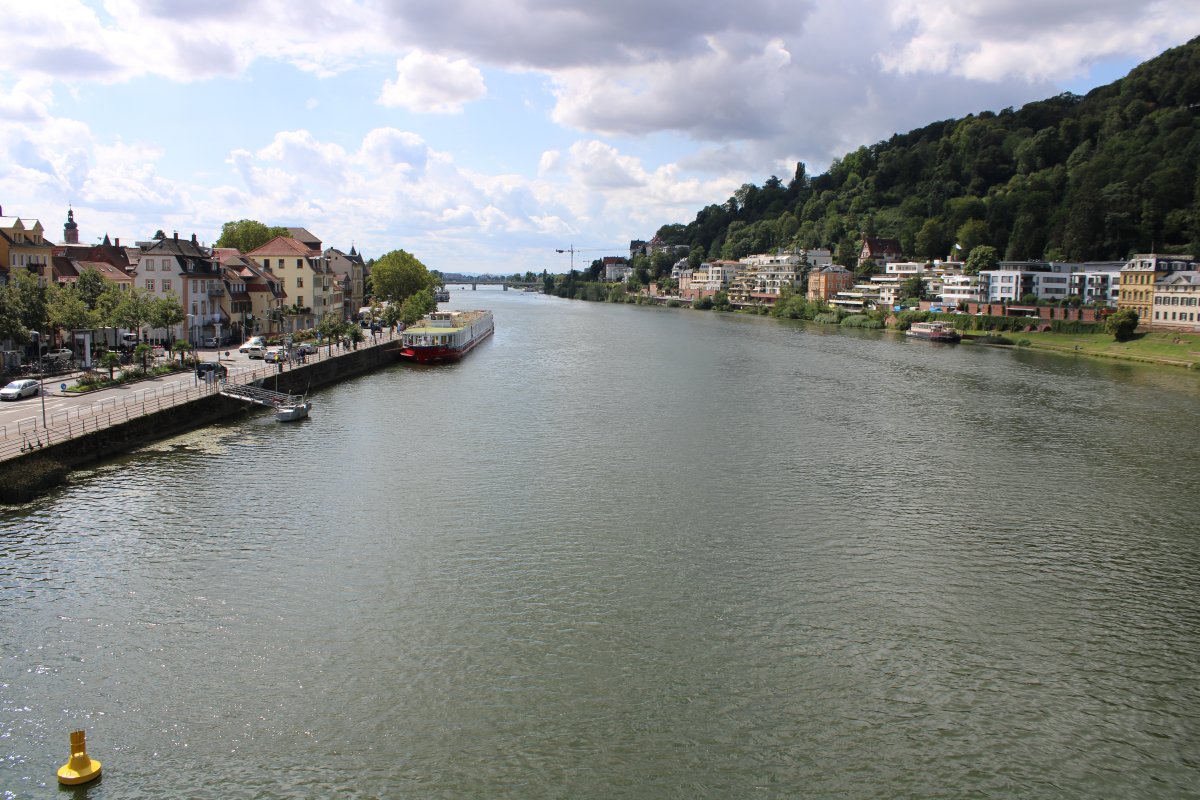Heidelberg - Day 11
This day the Ama Prima docked somewhere on the river, probably in Mannheim, and we took excursion buses to the famous German town of Heidelburg, which is a few miles to the east of the Rhine River on the Neckar River.
Heidelberg is a university town in the German state of Baden-Württemberg, in south-west Germany. Heidelberg is a scientific hub in Germany and home to several internationally renowned research facilities adjacent to its university, including the European Molecular Biology Laboratory and four Max Planck Institutes. The city has also been a hub for the arts, especially literature, throughout the centuries.
In the 5th century BC, a Celtic fortress of refuge and place of worship were built on the Heiligenberg, or "Holy Mountain". Both places can still be identified. In 40 AD, a fort was built and occupied by the 24th Roman cohort and the 2nd Cyrenaican cohort. The Romans remained until 260 AD, when the camp was conquered by Germanic tribes. Modern Heidelberg can trace its roots to the 12th-century Schönau Abbey monastery. In 1386, Heidelberg University was founded by Rupert I, Elector Palatine. Heidelberg University played a leading part in the era of humanism and the Reformation, and the conflict between Lutheranism and Calvinism, in the 15th and 16th centuries. Heidelberg's library, founded in 1421, is the oldest existing public library in Germany. In April 1518, a few months after proclaiming his 95 Theses, Martin Luther was received in Heidelberg, to defend them. Heidelberg was not targeted by Allied bombing raids during the World War II since Heidelberg was neither an industrial center nor a transport hub, and did not present a tactical or strategic target. On December 9, 1945, US Army General George S. Patton had a car accident in the adjacent city of Mannheim and died in the Heidelberg US Army hospital on December 21, 1945.
The excursion bus dropped us off at the Heidelberg Castle which overlooks the town.
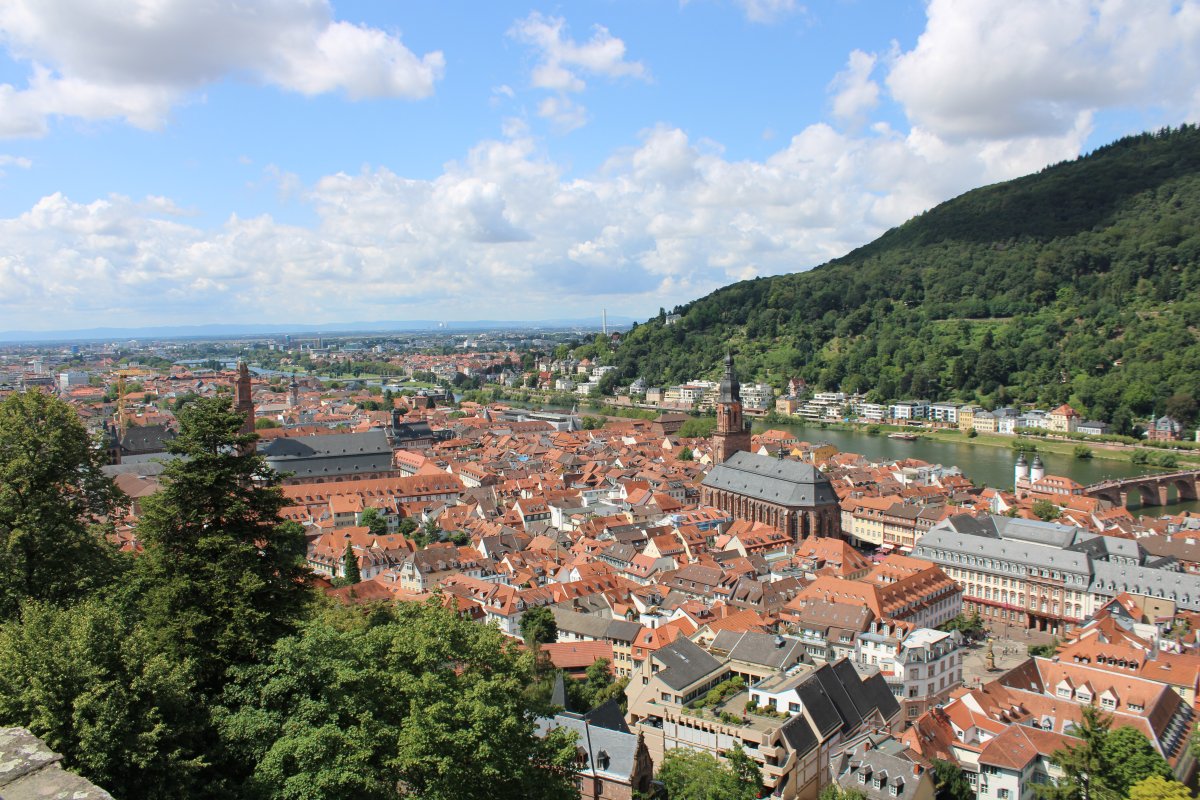
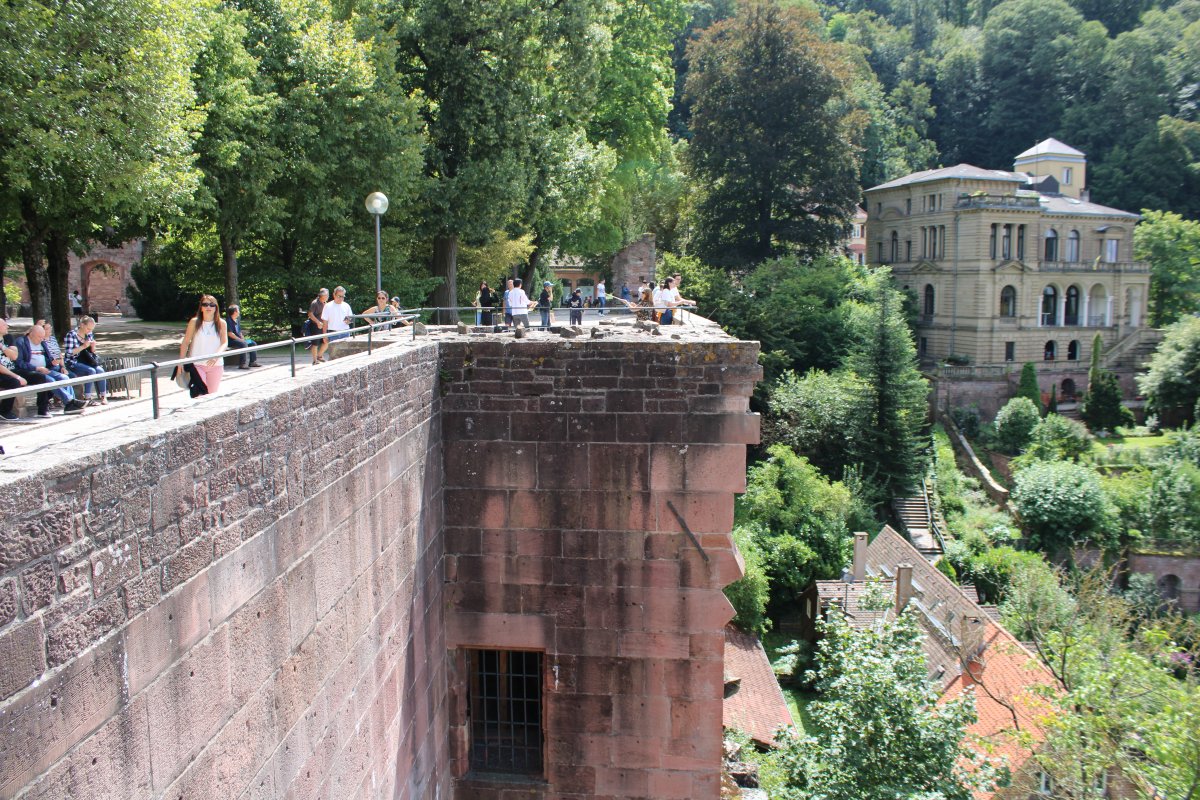
It was during the reign of Louis V, Elector Palatine (1508–1544) that Martin Luther came to Heidelberg to defend one of his theses (Heidelberg Disputation) and paid a visit to the castle. He was shown around by Louis's younger brother, Wolfgang, Count Palatine, and in a letter to his friend George Spalatin praises the castle's beauty and its defenses.
On a visit to Heidelberg in 1838, the French author Victor Hugo took particular pleasure in strolling among the ruins of the castle. He summarised its history in this letter:
'But let me talk of its castle. What times it has been through! Five hundred years long it has been victim to everything that has shaken Europe, and now it has collapsed under its weight. That is because this Heidelberg Castle, the residence of the counts Palatine, who were answerable only to kings, emperors, and popes, and was of too much significance to bend to their whims, but couldn't raise his head without coming into conflict with them, and that is because, in my opinion, that the Heidelberg Castle has always taken up some position of opposition towards the powerful. Circa 1300, the time of its founding.'
The famous 'Old Bridge" is visible at lower left.
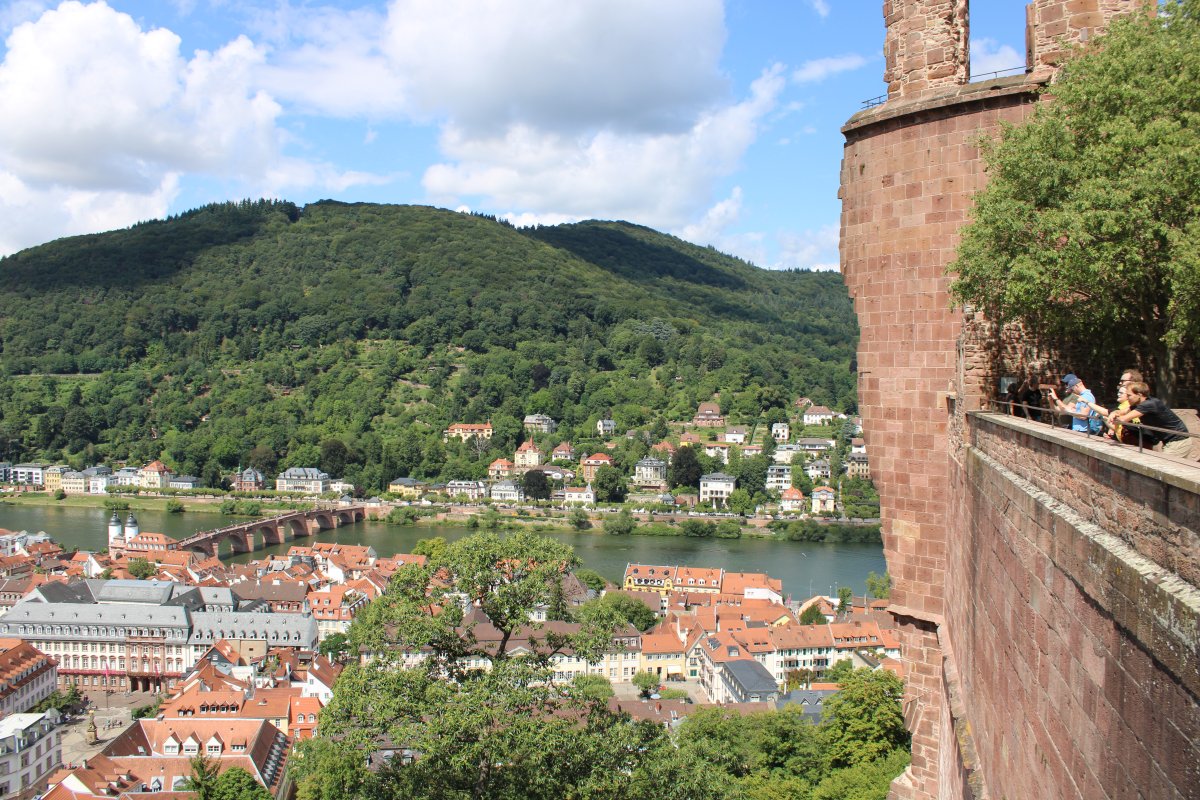
Mark Twain described the Heidelberg Castle in his 1880 travel book A Tramp Abroad:
'A ruin must be rightly situated, to be effective. This one could not have been better placed. It stands upon a commanding elevation, it is buried in green woods, there is no level ground about it, but, on the contrary, there are wooded terraces upon terraces, and one looks down through shining leaves into profound chasms and abysses where twilight reigns and the sun cannot intrude. Nature knows how to garnish a ruin to get the best effect. One of these old towers is split down the middle, and one half has tumbled aside. It tumbled in such a way as to establish itself in a picturesque attitude. Then all it lacked was a fitting drapery, and Nature has furnished that; she has robed the rugged mass in flowers and verdure, and made it a charm to the eye. The standing half exposes its arched and cavernous rooms to you, like open, toothless mouths; there, too, the vines and flowers have done their work of grace. The rear portion of the tower has not been neglected, either, but is clothed with a clinging garment of polished ivy which hides the wounds and stains of time. Even the top is not left bare, but is crowned with a flourishing group of trees & shrubs. Misfortune has done for this old tower what it has done for the human character sometimes – improved it.'
Yes, Mark Twain could write!

The castle has only been partially rebuilt since its demolition in the 17th and 18th centuries. The castle ruins are among the most important Renaissance structures north of the Alps.
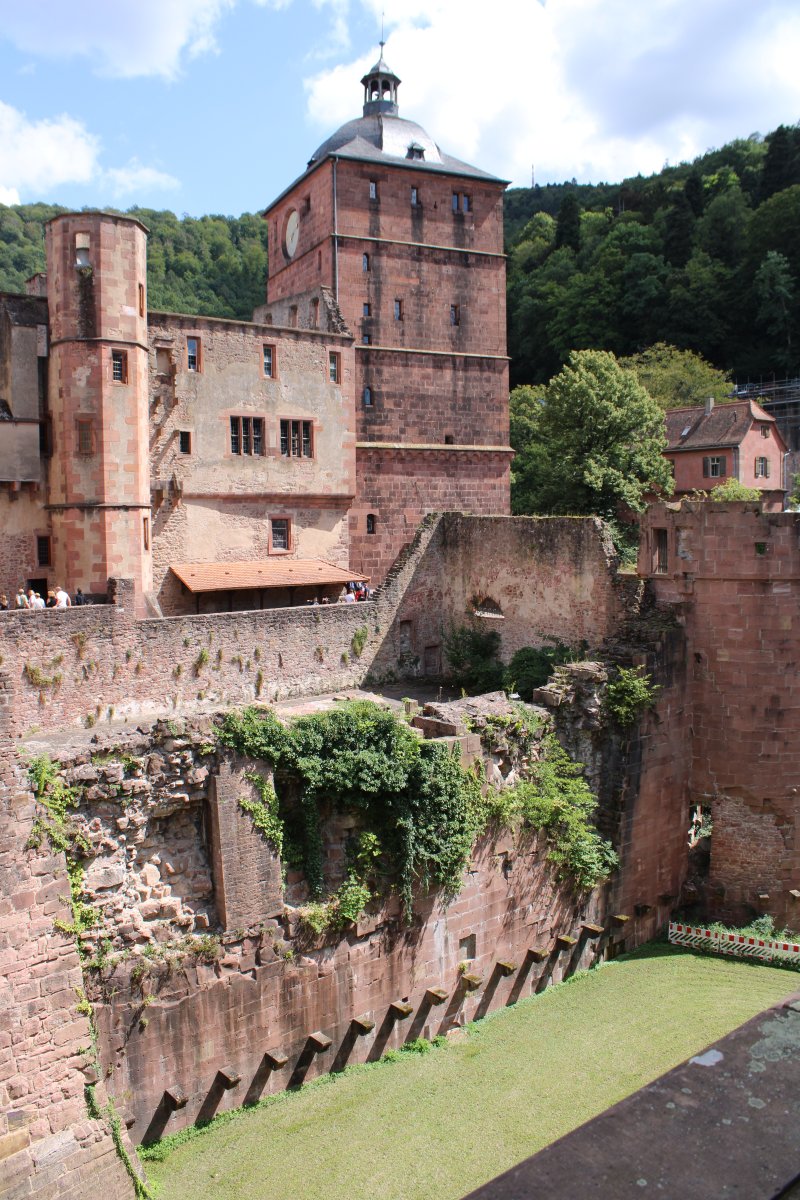
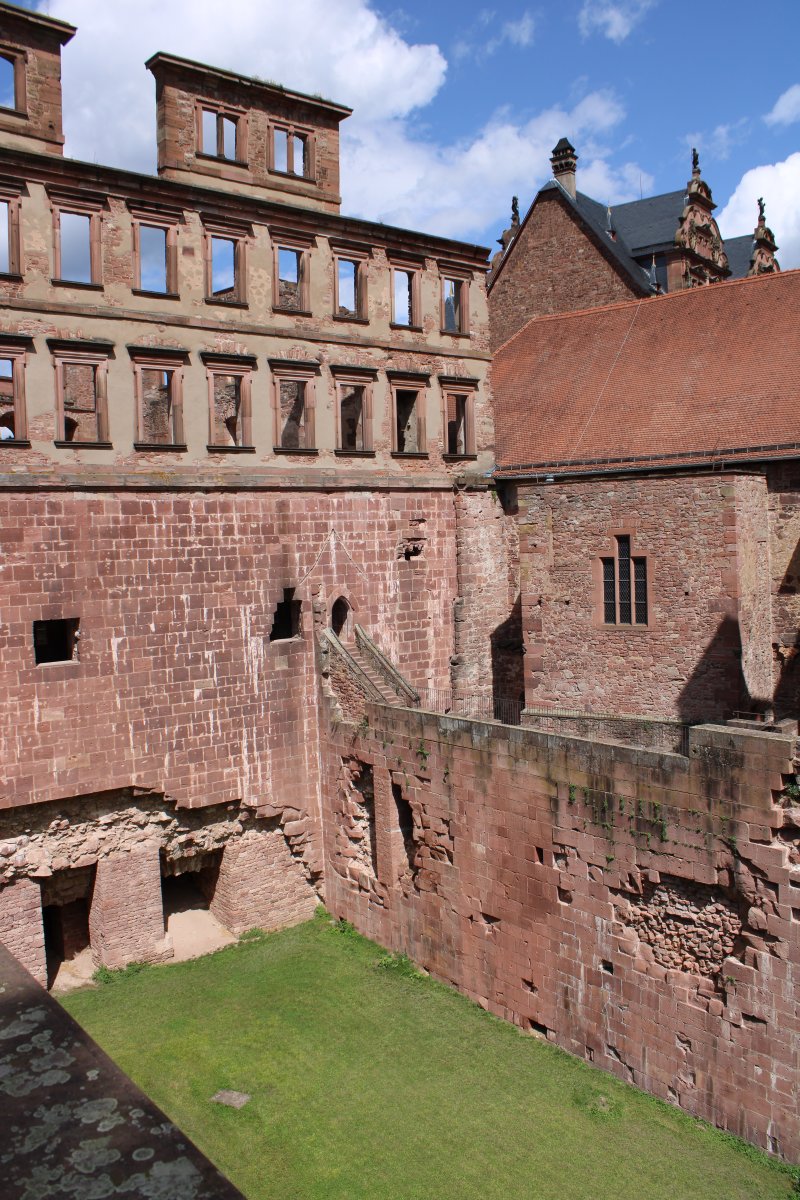

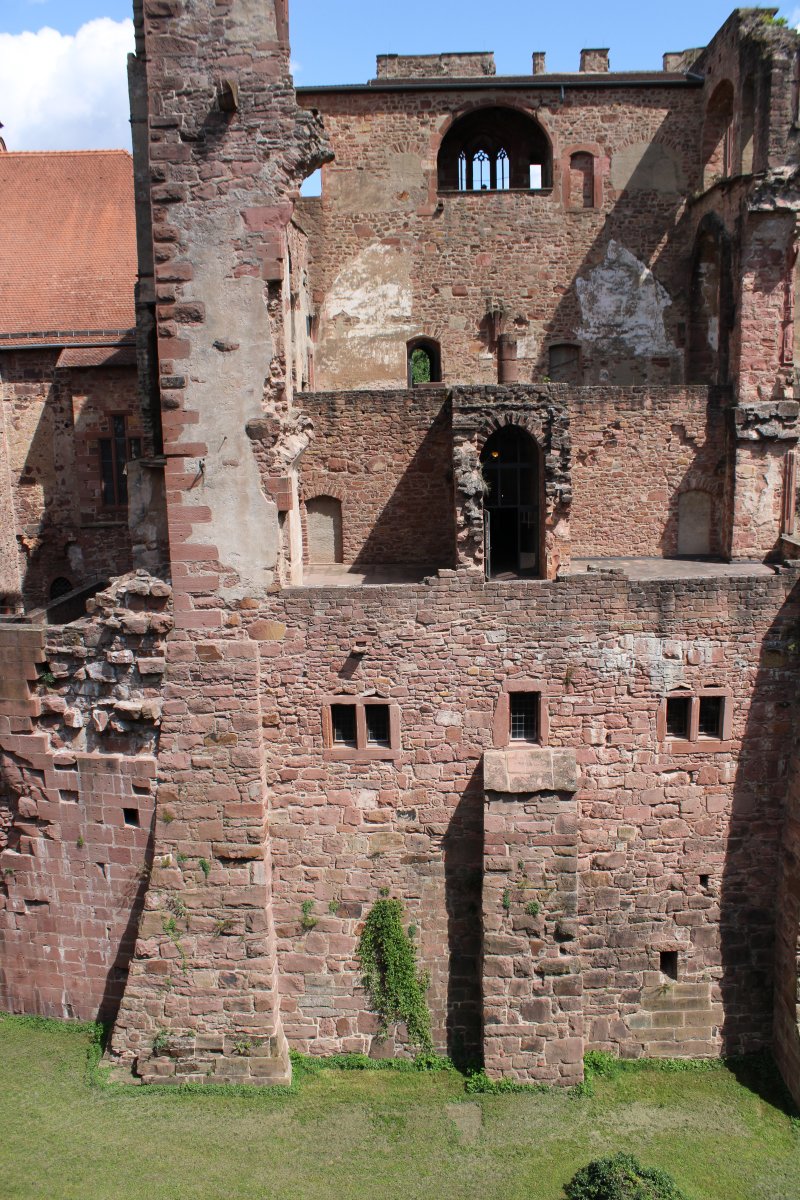
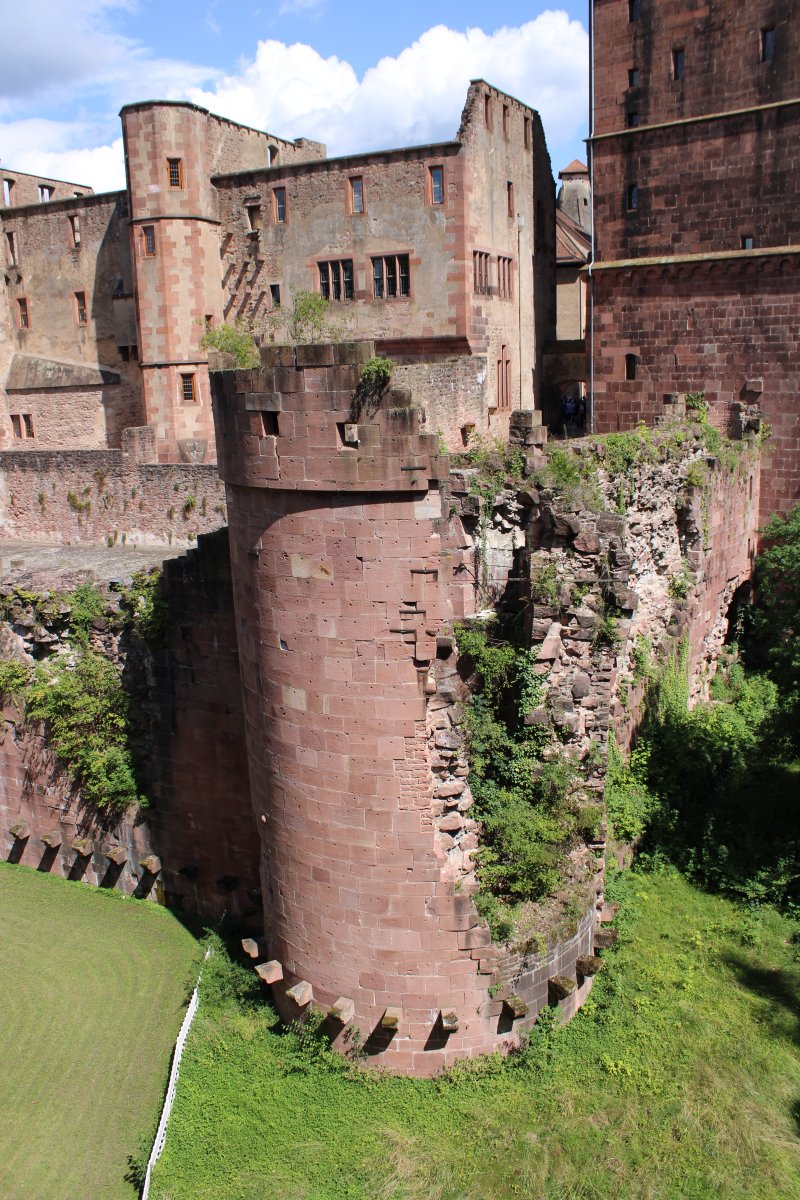
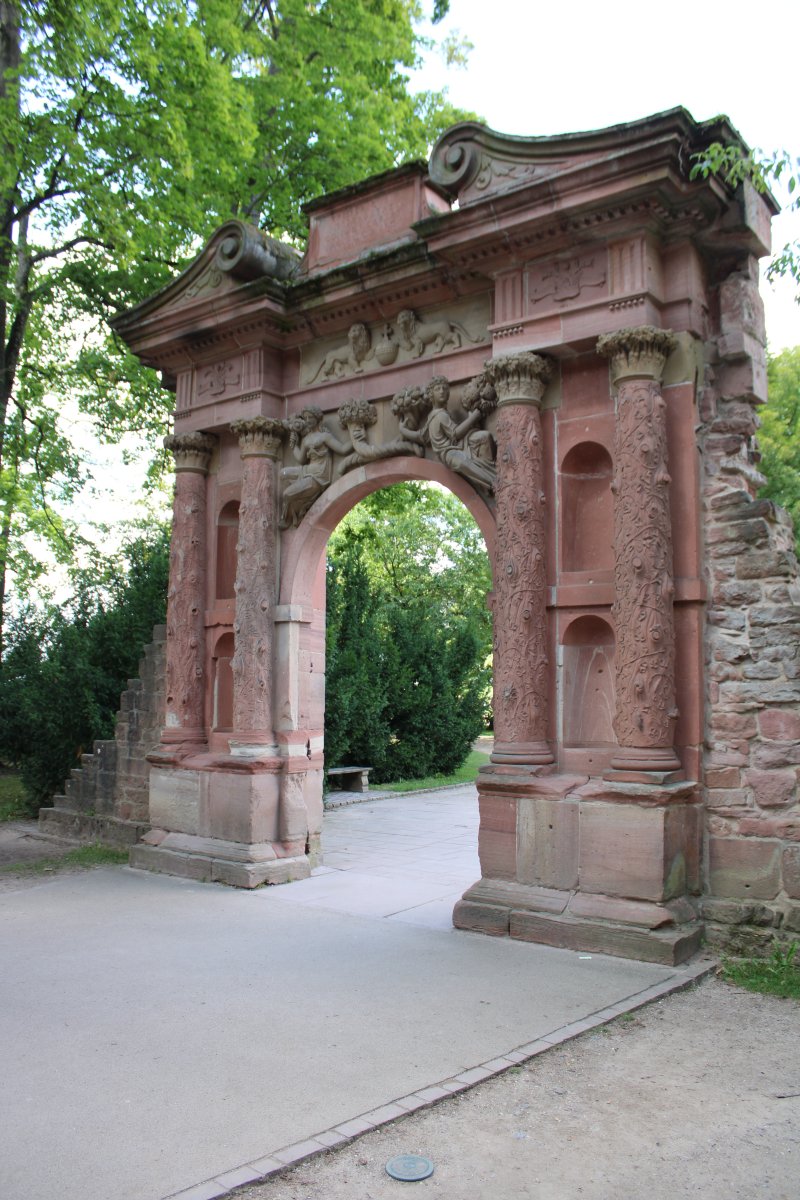
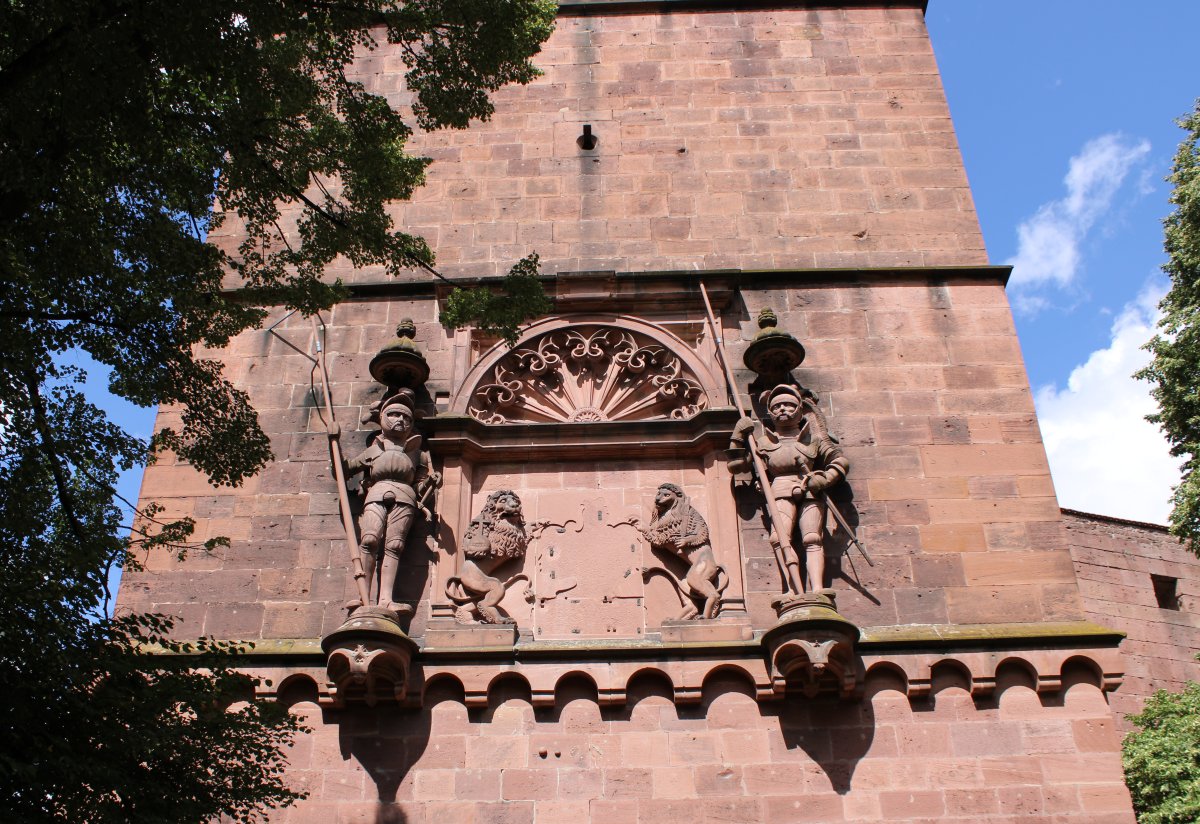
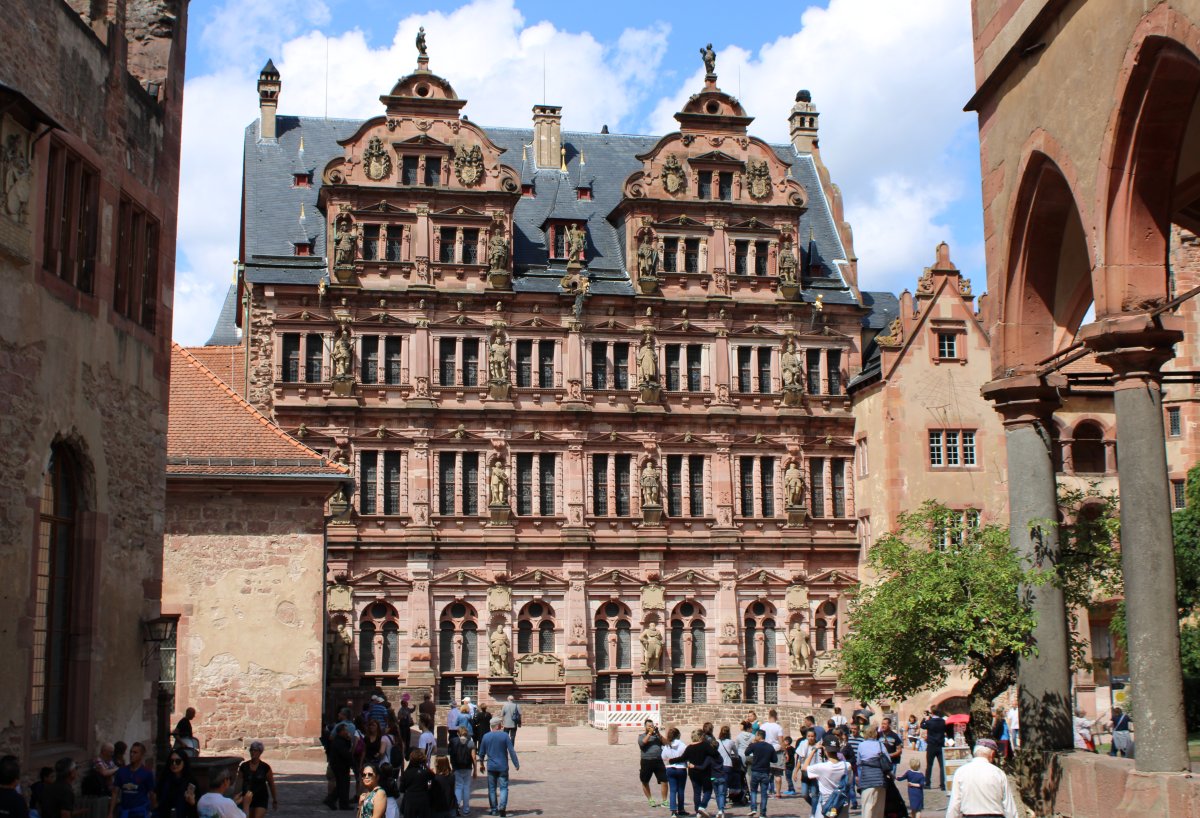

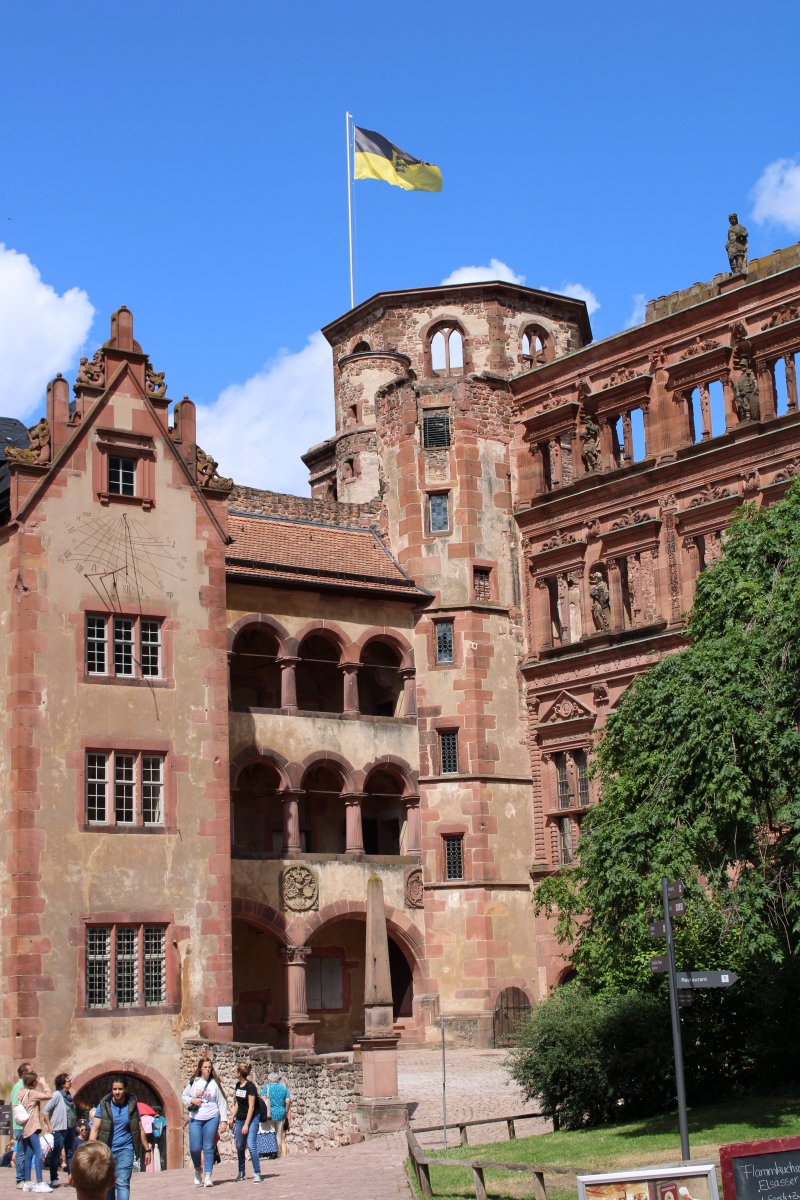
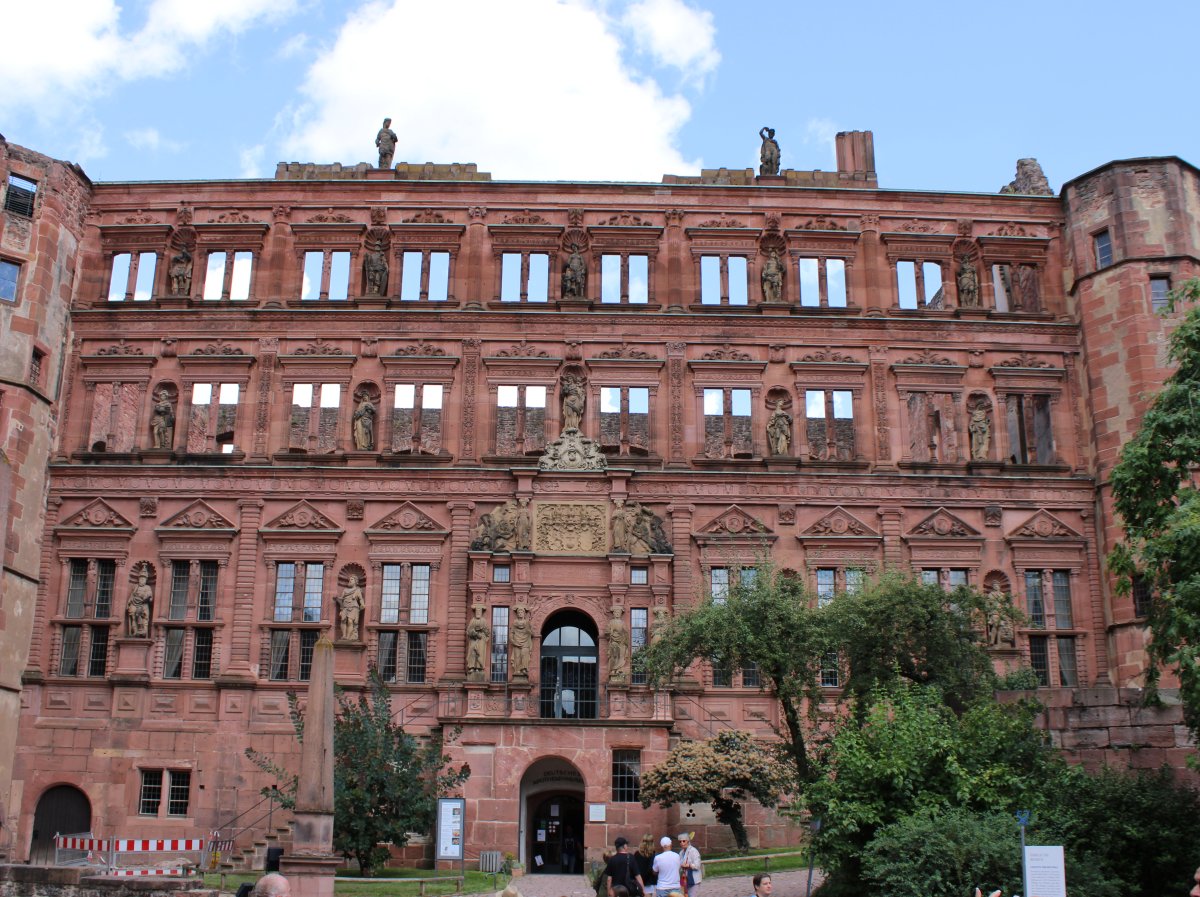
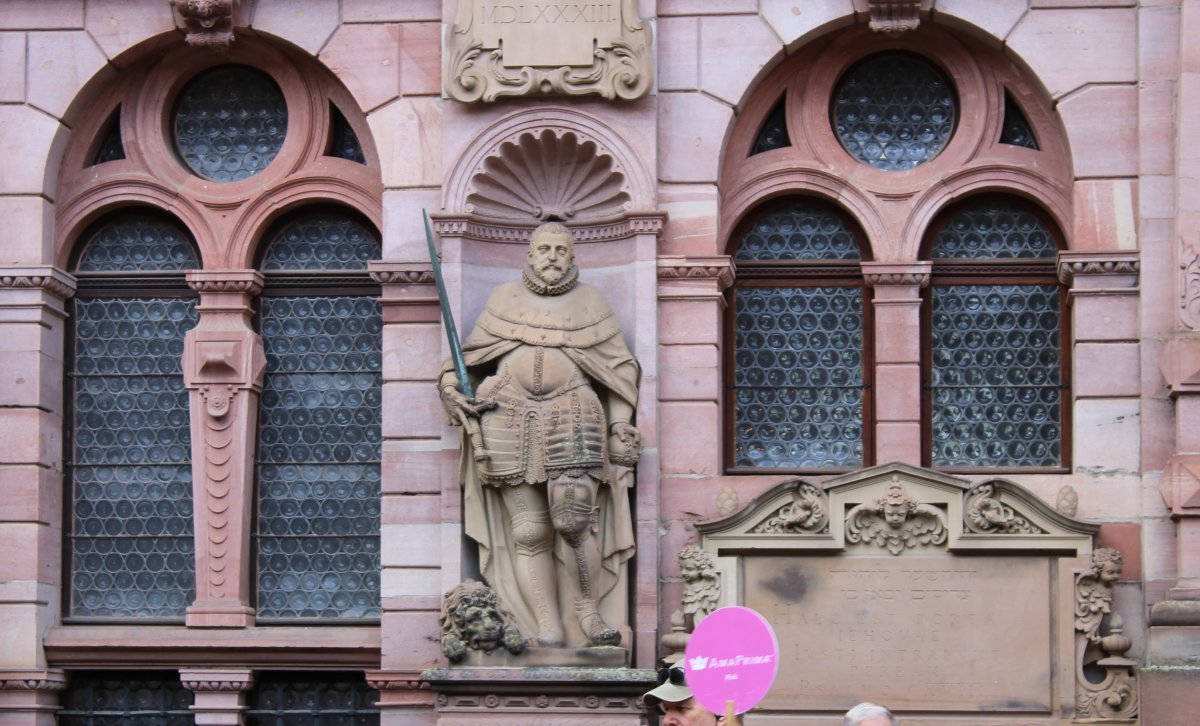
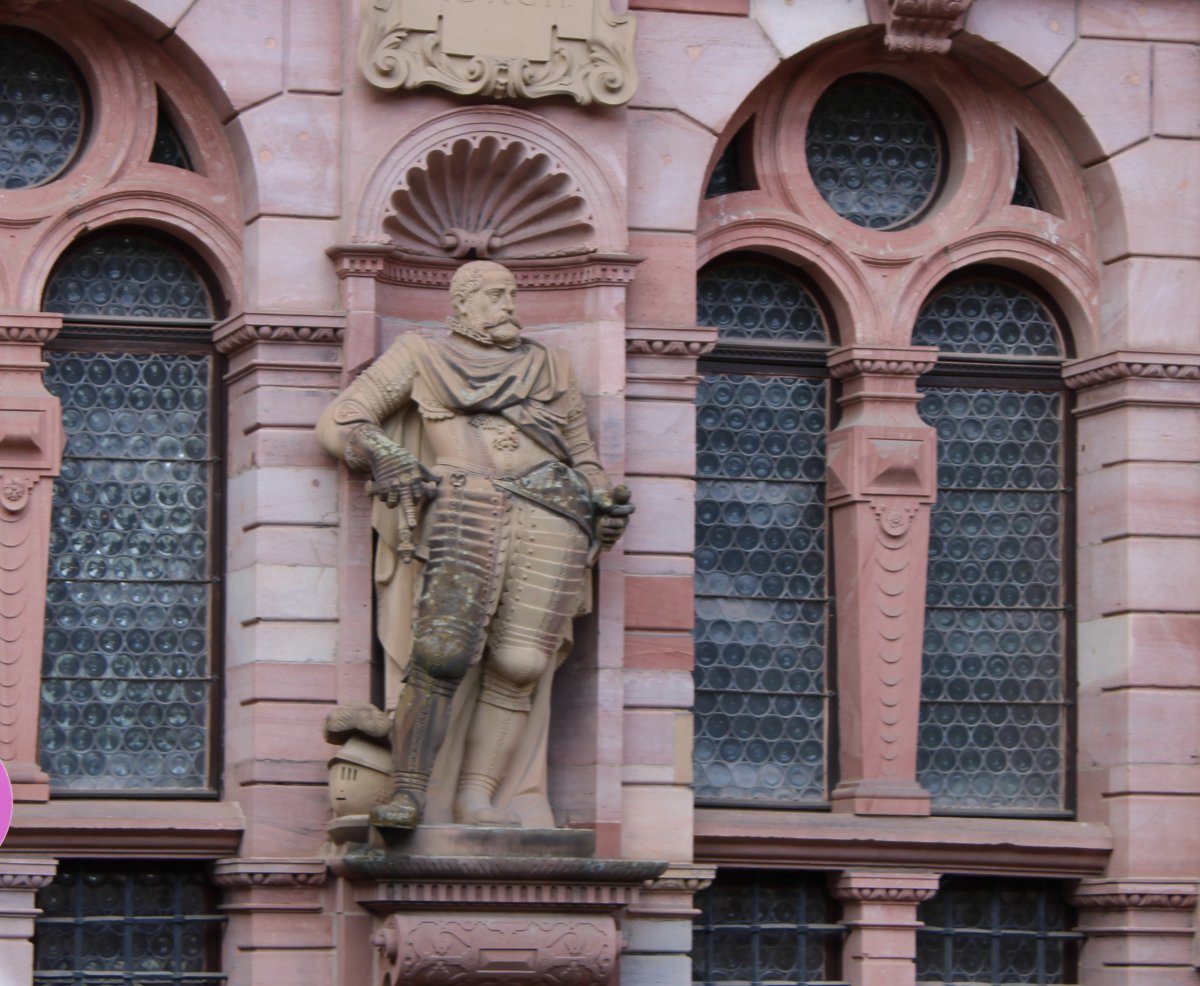

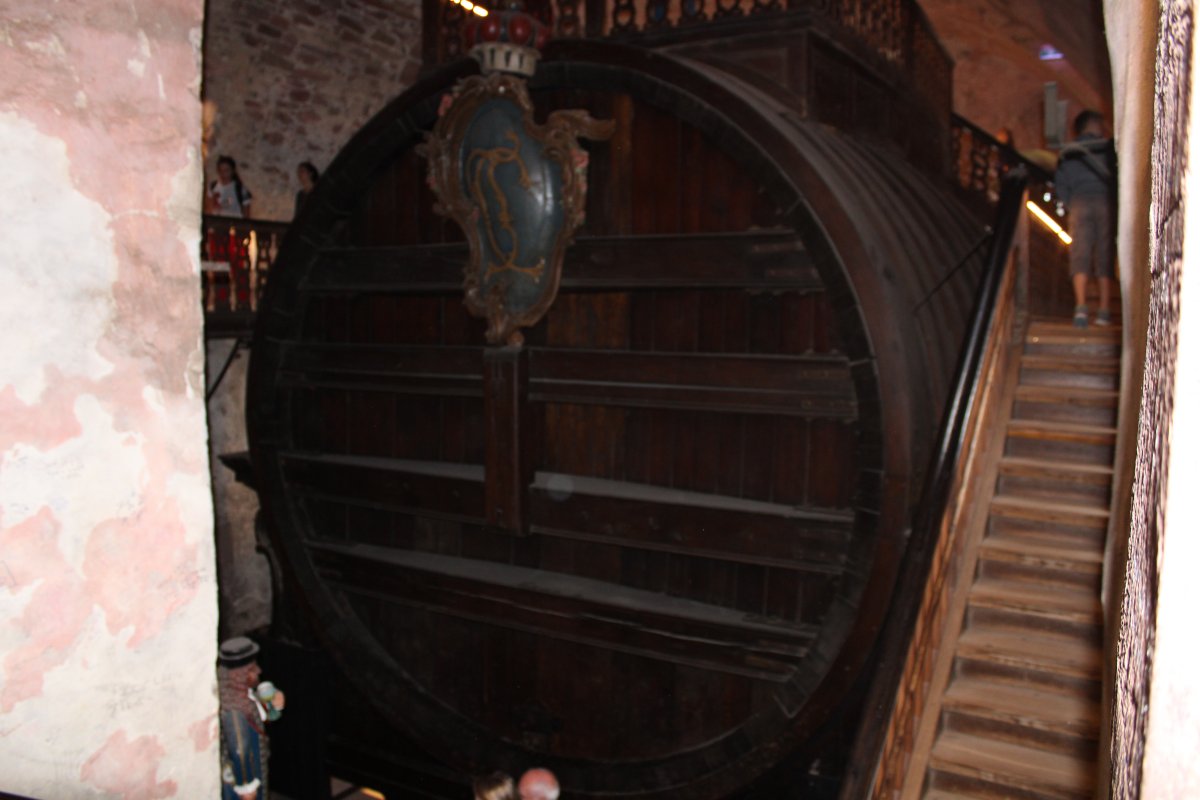
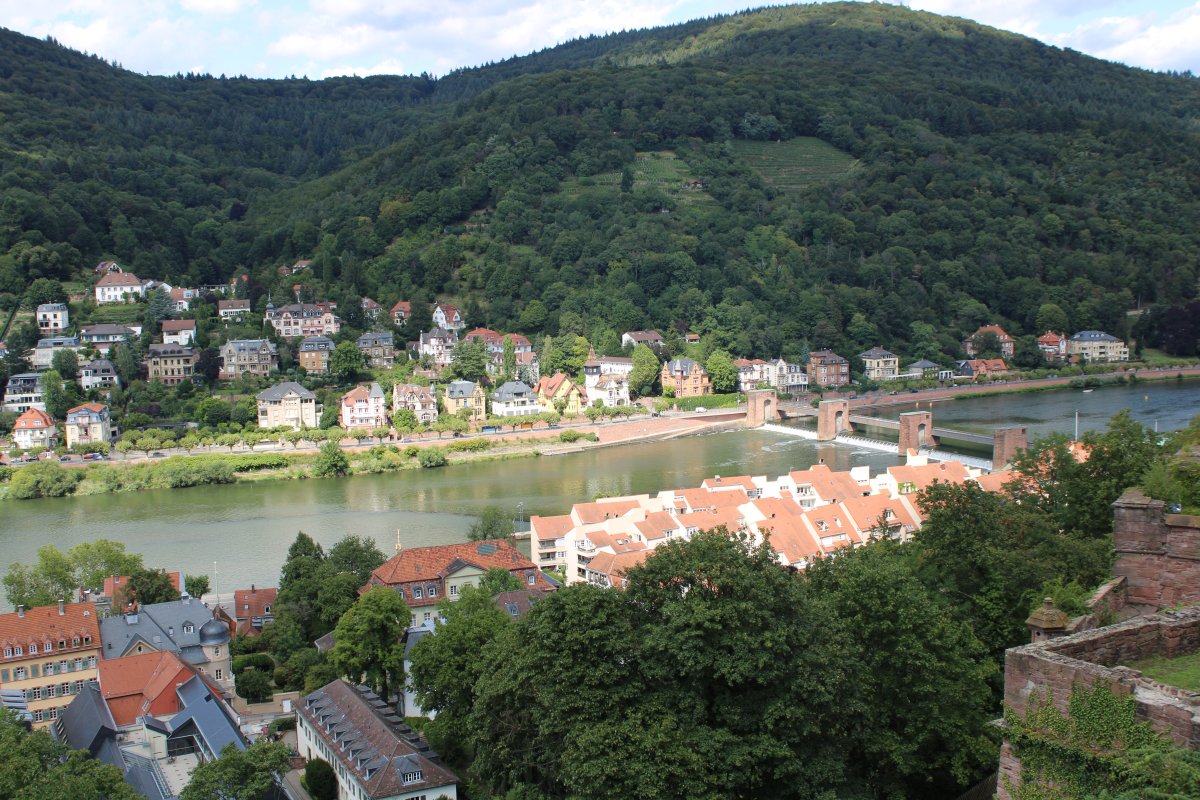
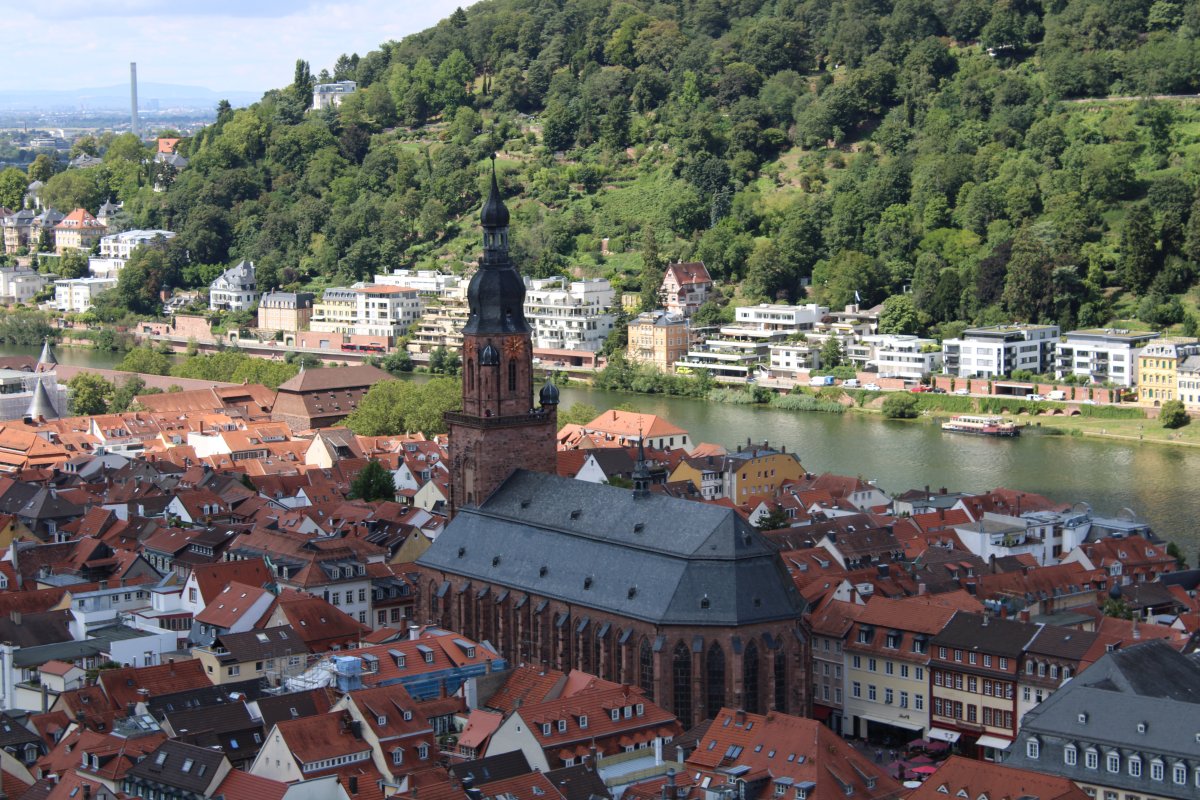
From the castle, we took a tram down to the town. Now we're walking around downtown Heidelberg.
Heidelberg is known for its institutions of higher education. The most famous of those is Heidelberg University Founded in 1386, it is one of Europe's oldest institutions. In fact, Heidelberg is the oldest university town of today's Germany. Among the prominent thinkers associated with the institution are Georg Wilhelm Friedrich Hegel, Karl Jaspers, Hans-Georg Gadamer, Jürgen Habermas, Karl-Otto Apel and Hannah Arendt. We saw lots of young people and bikes, a sure sign of a university!
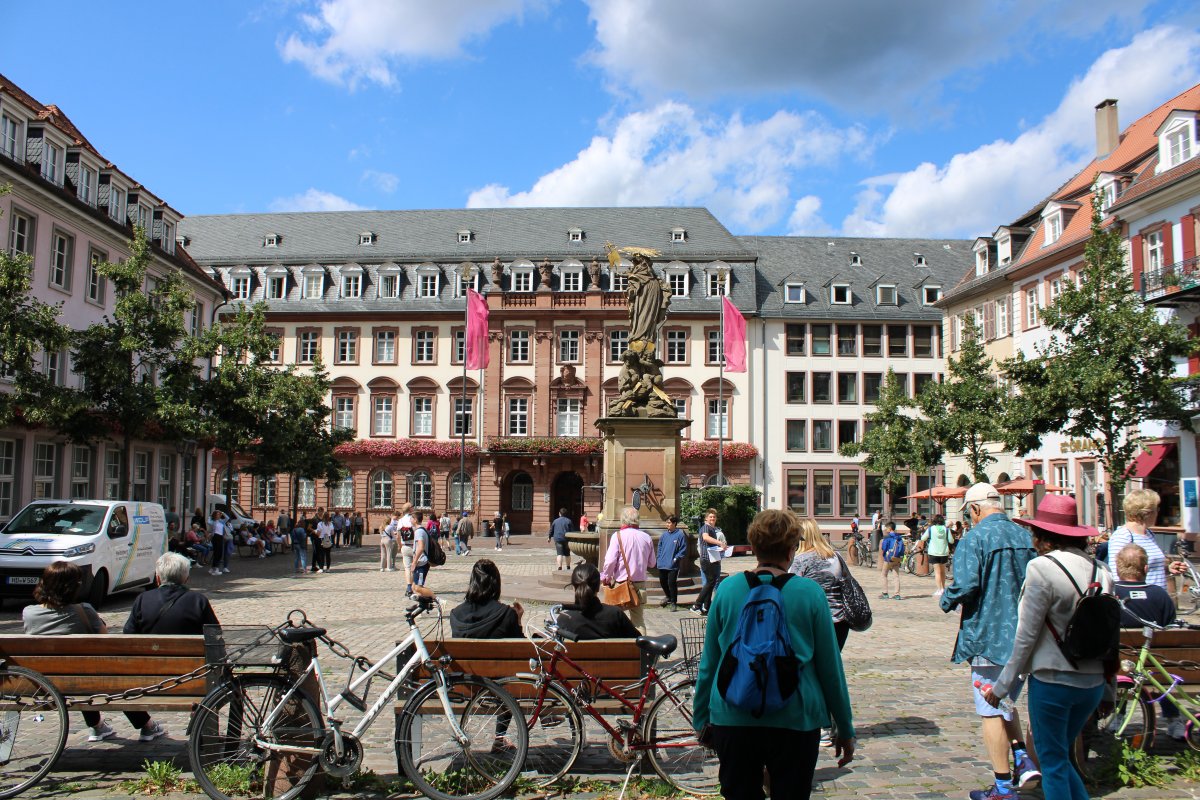

Looking at one end of the the Church of the Holy Spirit.
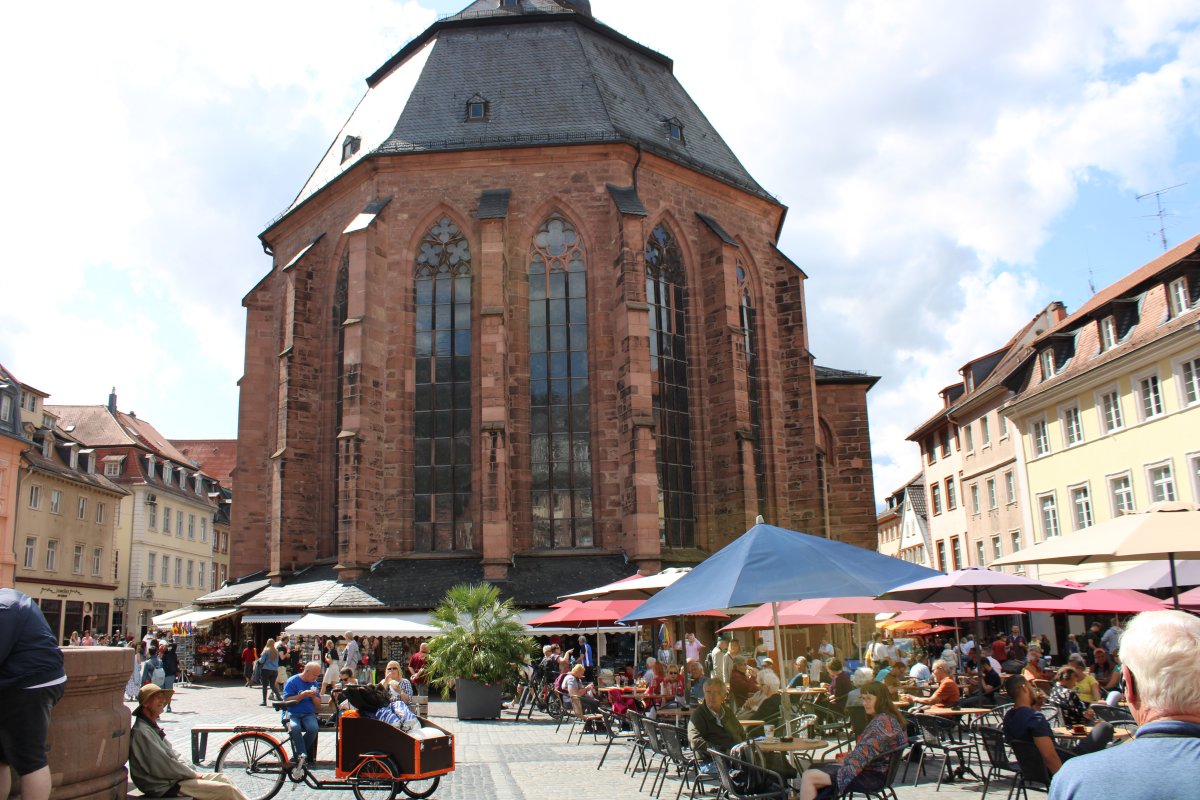
About to go on the Karl Theodor Bridge commonly known as the Old Bridge. It is a stone arch bridge in Heidelberg that crosses the Neckar river. Construction finished in 1788. Since the thirteenth century there have been eight bridges on the site; the current bridge is built on their foundations.
First we crossed through medieval bridge gate which is on the old town side, and was originally part of the town wall.
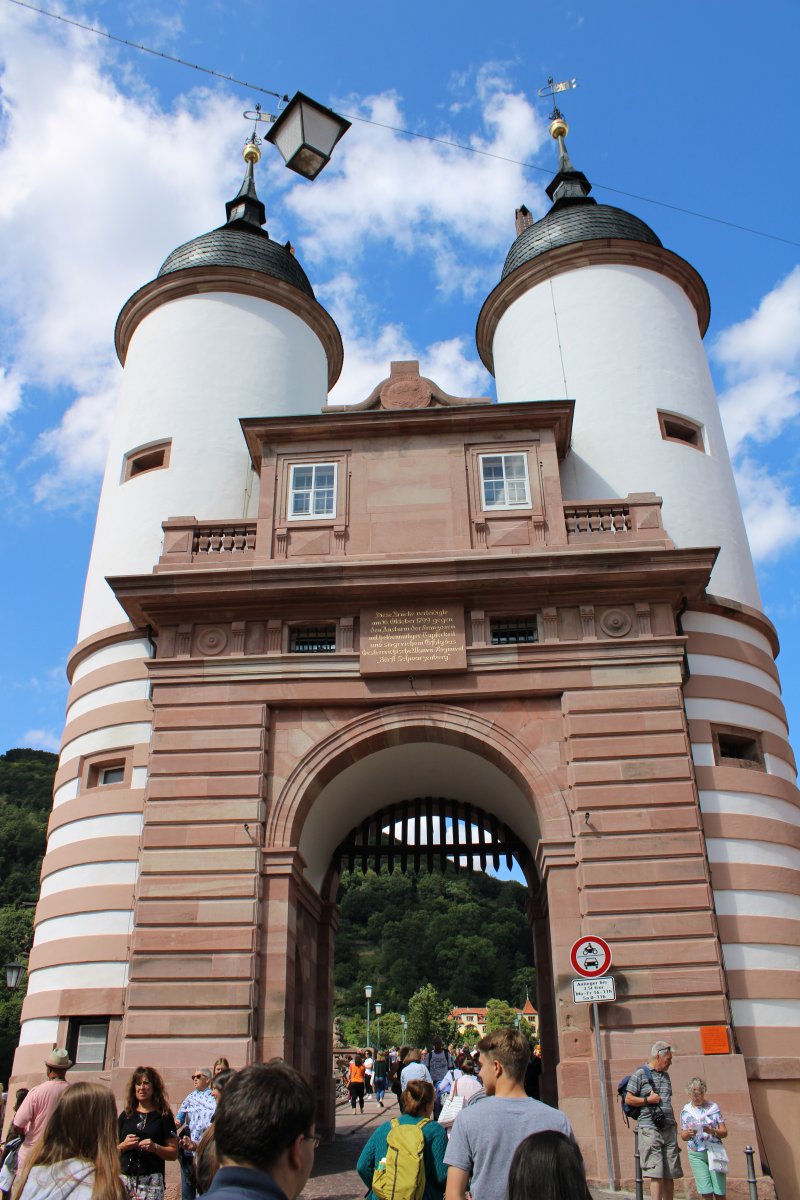
The Old Bridge monument on the left.
